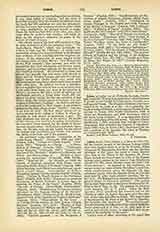

Lincoln, Diocese of (Ancient.—LINCOLNIENSIS). This see was founded by St. Theodore, Archbishop of Canterbury, in 678, when he removed the Lindiswaras of Lincolnshire from the Diocese of Lindisfarne. The original seat of the bishop was at Sidnacester, now Stow (eleven miles northwest of Lincoln), and for almost two hundred years the episcopal succession was there maintained, till in 870 the Northmen burnt the church of St. Mary at Stow, and for eighty years there was no bishop. About the middle of the tenth century the See of Sidnacester was united to the Mercian See of Leicester, and the bishop’s seat was fixed at Dorchester-on-Thames. But this was situate in the extreme corner of what was the largest diocese in England, so that the first Norman bishop, Remigius of F6-camp, decided after the Council of 1072, which ordered all bishops to fix their sees in walled towns, to build his cathedral at Lincoln, a city already ancient and populous. On the top of the steep hill the cathedral and Norman castle of Lincoln rose side by side. In 1075 Remigius signed himself “Episcopus Lincolniensis”, so that the transfer took place at once. The diocese then comprised no fewer than ten counties: Lincoln, Northampton, Rutland, Leicester, Cambridge, Huntingdon, Bedford, Buckingham, Oxford, and Hertford. A striking part of the Norman church still remains in the three deep arches of the west front of the cathedral. It was so solid an edifice that during the civil wars between Stephen and Matilda it was used as a fortress, but it was ultimately captured and plundered. In 1185 the cathedral suffered much damage in the great earthquake, and when in the following year St. Hugh was made Bishop of Lincoln he found it necessary to commence building again from the foundations. It was a momentous decision, as it resulted in the first English Gothic building and introduced the architecture of the pointed arch. The saint had completed the whole eastern portion of the church by the time of his death in 1200. Of his work the transepts alone remain. The nave was built during the next half century, when the great scholar Robert Grosseteste was bishop. His pontificate was marked by many reforms in the monasteries of the diocese and in the cathedral itself. In 1255 St. Hugh’s choir was pulled down to make way for the splendid “Angel Choir”, which was designed to hold his shrine, and is one of the masterpieces of Gothic architecture. On October 6, 1280, the translation took place in the presence of King Edward I and nearly all the English hierarchy. During the fourteenth century the three towers were raised to their present height, and the cathedral attained its present form, one of the finest and most remarkable in England. At the Reformation the shrine of St. Hugh was destroyed (June 6, 1540).
In 1536 the Diocese of Lincoln was the scene of the “Pilgrimage of Grace“, an armed protest against the religious changes which was followed by numerous executions. The reformer, Bishop Holbeach, plundered the cathedral during the reign of Edward VI, and the restored Catholic bishops under Mary had little time to repair the damage. The line of bishops of Lincoln, which had included two saints, three cardinals, and six chancellors (marked below *), was brought to a worthy close by Thomas Watson, who died a prisoner for the Faith at Wisbech Castle on September 27, 1584, being the last survivor on English soil of the ancient Catholic hierarchy. The following is the complete list of bishops: Remigius de Fecamp, 1067; *Robert Bloet, 1094; *Alexander, 1123; Robert de Chesney, 1148; vacancy, 1168; *Walter de Coutances, 1173; vacancy, 1184; St. Hugh of Lincoln, 1186; William de Blois, 1201 (cons. 1203); vacancy, 1206; *Hugh de Wells, 1209; Robert Grosseteste, 1235; Henry de Lexinton, 1253; Richard de Gravesend, 1258; Oliver Sutton, 1280; John de Dalderby (popularly regarded as a saint), 1300; Henry Burghersh, 1320; Thomas Bek, 1341; John Gynwell, 1347; John Bokyngham, 1363; Henry Beaufort (Cardinal), 1398; Philip Repyngdon (Cardinal), 1405; Richard Fleming, 1420; William Gray, 1431; William of Alnwick, 1436; Marmaduke Lumley, 1450; vacancy, 1451; John Chadworth, 1452; *Thomas Rotherham (Scot), 1472; *John Russell, 1480; William Smyth, 1496; Thomas Wolsey (Cardinal), 1514; William Atwater, 1514; John Longland, 1521; Henry Holbeach, 1547 (schismatic); John Taylor, 1552 (schismatic); John White, 1554; Thomas Watson, 1557. The diocese included the counties of Lincoln, Leicester, Huntingdon, Bedford, Buckingham, and part of Hertfordshire, and was divided into six archdeaconries: Lincoln, Leicester, Bedford, Buckingham, Huntingdon, add Stow. From the diocese three other sees have been formed: Ely, under Henry I; Oxford and Peterborough, under Henry VIII—yet the Anglican diocese is today the largest in England. The arms of the see were: gules, two lions passant gardant or, in a chief azure Our Lady sitting with her Babe, crown and scepter of the second.
EDWIN BURTON

